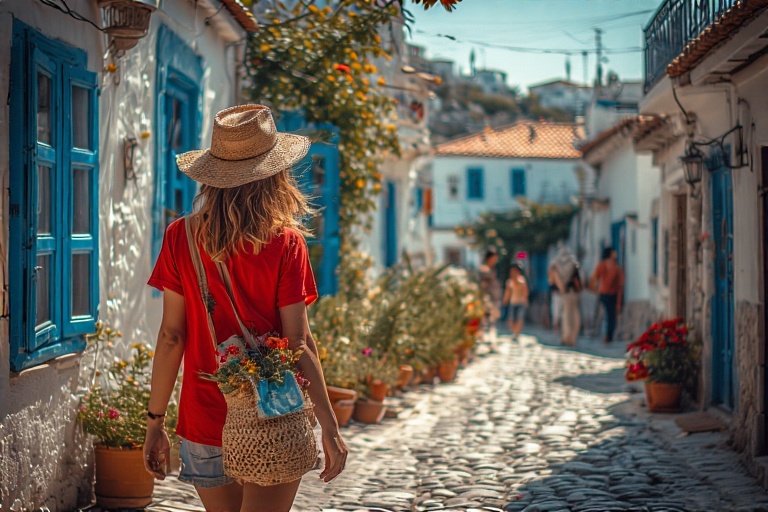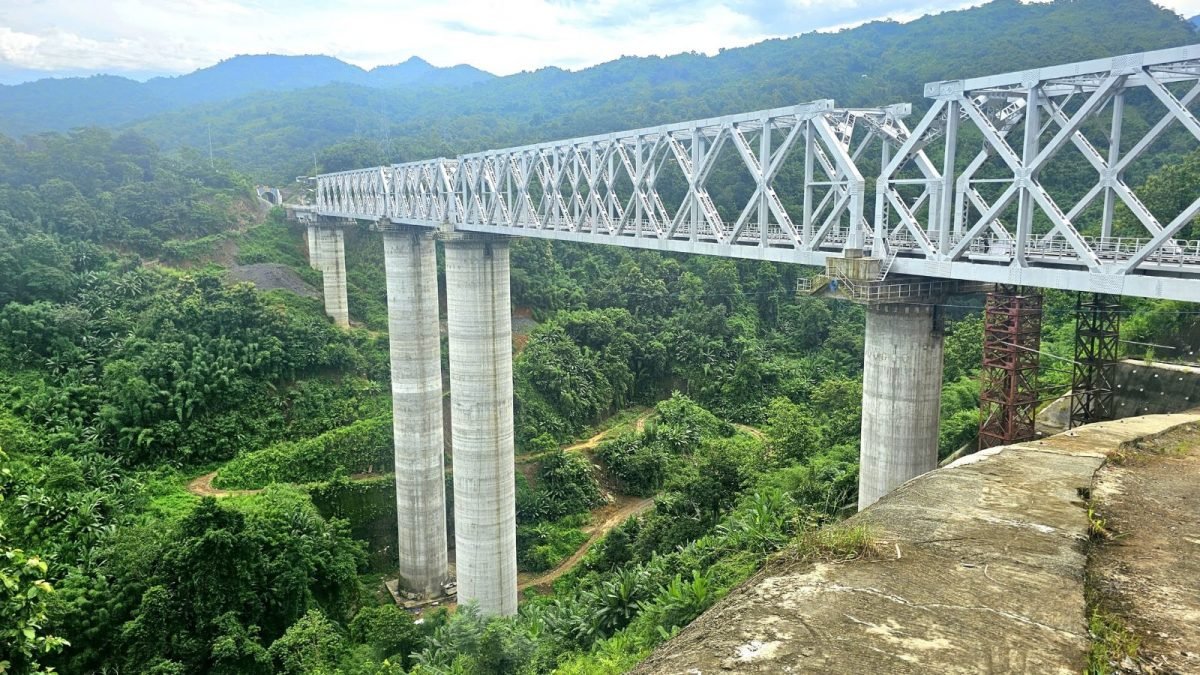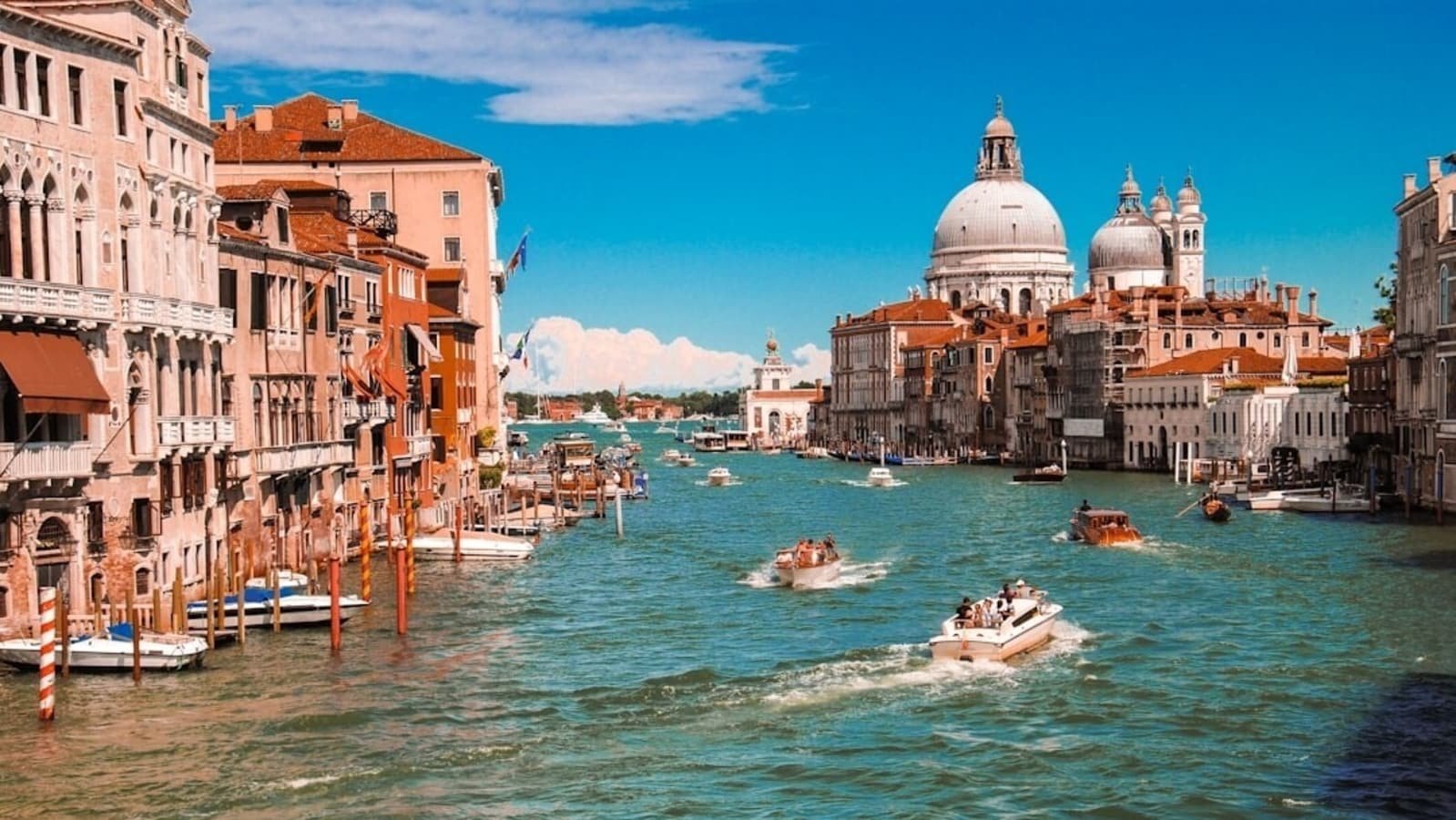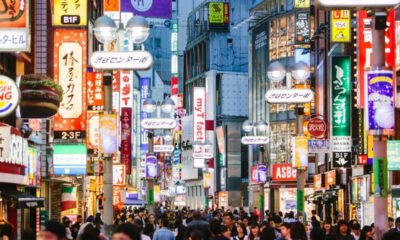Travel Guides & Articles
Turkey Joins US, Canada, UK, Japan, China, India, and Romania in Leading a Travel Revival From Within Boosting the Tourism Sector: New Report

Wednesday, July 23, 2025
Turkey now joins China, the US, Japan, India, Canada, the UK and Romania in driving an impressive travel ‘comeback from within’. And, all have experienced a significant surge in local travel demand that has directly catalysed a recovery in their domestic tourism economies. And the change has been engineered by citizens increasingly keen to explore their own countries like never before—staying longer, spending more and going local to find meaningful and value-driven getaways. As a new generation of travelers situation economic challenges, expensive airfares, and evolved travel priorities, these countries capitalize on a resurgence in regional adventures and cultural renaissance. And the result is a homegrown tourism surge that is breathing life into local businesses, supporting the growth of infrastructure and keeping millions of dollars in travel expenses inside the nation’s borders.
Turkey: Local Wanderlust Powers New Heights in Travel Spending
In the first quarter of 2025, Turkey witnessed an extraordinary boom in travel from within its borders. The country recorded 10.75 million domestic trips, a stunning 28.4% increase from the same period in 2024. Turkish citizens also extended their average stays to 6.7 nights, resulting in 85.32 million overnights across the nation. Total domestic travel spending soared by 68.9%, reaching 76.43 billion Turkish Lira, with 93.5% of that amount coming from independent travelers rather than tour packages.
Interestingly, the spending habits reflect a deeper engagement with the travel experience itself. Turks directed 32% of their budgets toward food and drink, 28.4% on transportation, and 10.8% on accommodation. Visits to family members led the motivations, followed by vacations and health trips. And while hotels still played a role, most travelers opted to stay with family or friends, showing a preference for intimate and cost-effective journeys. This surge in homegrown exploration has not only energized local tourism operators, but also strengthened regional economies across Anatolia and beyond.
China: Billions of Trips Spark a Tourism Engine From Within
China continues to break records with the sheer scale of its internal travel momentum. During the 40-day Lunar New Year period alone, citizens made 9.02 billion domestic trips, shattering previous records. Train travel hit 513 million passengers, and air travel surged by 7.4% compared to last year. The May Day holiday brought another 314 million trips, up 6.5%, and generated over RMB 180 billion in spending—an 8% year-over-year jump. Even shorter breaks like the Dragon Boat Festival fueled 119 million trips and RMB 42.7 billion in revenue.
This massive movement isn’t just about volume—it’s about intent. Chinese travelers are increasingly choosing nature-based experiences, historical regions, and rural escapes. The government’s infrastructure investments have made it easier for people to access remote provinces and second-tier cities, driving economic activity far beyond the major metropolitan areas. China’s domestic tourism revival is acting as a stabilizer for industries from hospitality to transport and is now a key pillar of the country’s post-COVID economic strategy.
United States: Record-Breaking Numbers Fuel a Coast-to-Coast Revival
While international arrivals in the US have dipped slightly, Americans are traveling across their own country in numbers not seen in decades. In Q1 2025, Florida alone welcomed 41 million travelers, and 92% were domestic visitors. Leisure travel rose 13.8% in April, and the trend of “bleisure”—mixing business with leisure—is driving new patterns in hotel bookings and weekend getaways. TSA reported historic screening volumes, confirming the rise in air-based domestic movement.
The American traveler is also spending more per trip, with destinations like national parks, beach towns, and mid-sized cities experiencing record occupancy and demand. States have doubled down on regional travel marketing, promoting local food trails, road trips, and hidden gems. The result is not just a tourism boost, but a ripple effect into small businesses, car rental companies, and even state park systems. Domestic travel has become a core economic engine in the US, and in 2025, it’s not slowing down.
Japan: Heritage, Islands, and Countryside Anchor a Local Boom
Japan’s residents are embracing their own islands like never before. In 2024, the country saw 540 million domestic trips, and 2025 has picked up right where it left off. Japanese citizens spent a staggering ¥26.2 trillion (around $181 billion) exploring their own landscapes. Government campaigns promoting “micro-travel” and rural revitalization have helped encourage more locals to explore lesser-known prefectures, particularly in Kyushu, Shikoku, and Hokkaido.
Cultural events, wellness retreats, and regional gastronomy have become huge drivers of this resurgence. The tourism ministry has offered travel subsidies and special holiday packages to extend trips and distribute travel demand more evenly across regions. These efforts have turned local tourism into a sophisticated, economically significant engine—powering everything from local train lines to traditional inns. Japan’s quiet countryside is now thriving on the footsteps of its own people.
India: Rising Middle Class Fuels Travel and Infrastructure Growth
India’s domestic skies are busier than ever. In April 2025, domestic air passenger traffic jumped 10.2% year-over-year. This growth is closely tied to an expanding middle class, improved affordability, and growing trust in air travel. At the same time, India saw a wave of hotel construction, with 693 new projects under development totaling 89,000 rooms, reflecting investor confidence in local travel demand.
Beyond air travel, spiritual circuits, heritage routes, and government-led tourism campaigns are making domestic exploration more accessible to all income levels. Many Indians are venturing into offbeat destinations—from the Northeast to the deserts of Rajasthan—turning internal tourism into a diverse, multi-dimensional experience. India’s local travel industry is no longer seasonal or region-specific; it’s become a year-round, nationwide movement.
Canada: Regional Adventures Drive Spending Growth
Canada’s domestic tourism scene is flourishing in 2025. In the first quarter, domestic tourism spending rose to C$21.4 billion, a 4% increase year-on-year, and 38% higher than 2019 levels. This increase reflects a strong consumer preference for regional road trips, outdoor escapes, and nature-centric vacations. Canadians are choosing weekend escapes to the Rockies, extended stays in Atlantic Canada, and immersive Indigenous tourism experiences.
Provinces like British Columbia and Quebec have led the way, reporting strong occupancy rates and rising small-business revenues tied to tourism. With a well-developed tourism infrastructure and strong support from federal and provincial governments, Canada’s local travel sector is entering a new era of sustainability and economic power. Seasonal events, culinary festivals, and regional pride are helping Canadians rediscover their own land in creative and impactful ways.
United Kingdom: Staycations Transform Regional Economies
The United Kingdom has seen a solid uptick in internal travel, particularly in Scotland. In Q1 2025, UK residents made 56 million leisure day trips, generating £2 billion in spending. Coastal destinations, countryside retreats, and historical sites remain in high demand as travelers opt for more affordable, flexible alternatives to overseas vacations.
Scottish cities like Edinburgh and Inverness have reported strong visitor numbers, and staycation campaigns across Wales and Northern England have kept tourism momentum steady. Public-private partnerships have supported infrastructure upgrades, boosting both convenience and appeal for domestic travelers. As the cost of international travel remains high for many households, the UK’s internal travel economy is reaping the benefits.
Romania: Local Travel Keeps Climbing in 2025
Romania continues to build on a late-2024 increase in local travel. In December 2024, the country reported a 4.9% rise in overnight stays, and that trend has carried into 2025 with new momentum. Popular areas such as the Black Sea resorts, Transylvania, and the Carpathian Mountains are drawing larger numbers of Romanian travelers seeking affordable and enriching getaways.
With improved road networks and more regional flight connections, Romanians are exploring their country with greater ease. Boutique accommodations, farm stays, and cultural events have gained popularity, especially among young travelers and families. As economic confidence grows, more Romanians are choosing to spend their holidays locally, contributing directly to the national tourism economy.
Turkey has joined China, the US, Japan, India, Canada, the UK, and Romania in leading a travel revival from within, as rising local demand and increased travel spending drive powerful growth across each country’s tourism sector. This shift is fueled by citizens choosing homegrown getaways over international trips, boosting economies from the inside out.
A Global Travel Revival Led by Locals
As the world adjusts to changing travel patterns and economic priorities, countries like Turkey, China, the US, Japan, India, Canada, the UK, and Romania have proven that the tourism industry can thrive without depending on foreign visitors. This revival, fueled by local travelers, is not only stabilizing national economies but also redefining how people connect with their own cultures, landscapes, and communities. In 2025, the most powerful force in global tourism is coming from within—and it’s reshaping the future of travel, one country at a time.
Travel Guides & Articles
PM Modi reaches Kuki stronghold Churachandpur after travelling 65 km by road from Imphal due to bad weather

PM Modi in Manipur LIVE: PM inaugurates Mizoram’s first railway line, flags off state’s maiden Rajdhani Express
PM Modi inaugurated Mizoram’s first railway line and flagged off the state’s maiden Rajdhani Express connecting Aizawl with Delhi. The Rs 8,070-crore Bairabi–Sairang railway line, considered one of the most challenging in Indian Railways’ history, was sanctioned in 2008-09 and construction began in 2015.
The line includes 45 tunnels, 55 major bridges and 87 minor bridges. Bridge No 144, near Sairang, is taller than Qutub Minar at 114 metres. It is the tallest pier railway bridge in the country, an official of the Northeast Frontier Railway said.
The route also features five road overbridges and six underpasses, covering four main stations — Hortoki, Kawnpui, Mualkhang, and Sairang — apart from Bairabi.
The direct rail connectivity between Mizoram and the rest of the country will offer the people of the region safe, efficient, and cost-effective travel options.
Travel Guides & Articles
How Bairabi-Sairang Line, Mizoram’s First Railway Link, Will Cut Travel Time & Boost Local Economy | India News

Last Updated:
Conceptualised 26 years ago, the 51.38 km railway line traverses one of India’s most difficult terrains and includes 48 tunnels stretching almost 13 kilometres in total
Aizawl will be the fourth north-eastern capital after Assam, Tripura, and Arunachal Pradesh to be linked to the national rail network. (All India Radio)
Prime Minister Narendra Modi on Saturday dedicated Mizoram’s first railway line, the Bairabi-Sairang line to the nation, highlighting how it will be a “lifeline of transformation” by helping people avail better services and local businesses will get access to the rest of the country.
“This is not just a railway connection, but it is a lifeline of transportation. It will revolutionise the lives and livelihoods of people of Mizoram. Farmers and businesses of Mizoram can reach more markets across the nation,” the prime minister said.
Calling the inauguration of the railway line a “historic day”, PM Modi said: “This is a historic day, particularly for the people of Mizoram. From today, Aizwal will be on India’s railway map. A few years ago, I had the opportunity to lay the foundation stone for the Aizwal railway line. Today we proudly dedicate it to the people of the nation.”
Architectural Marvel
Conceptualised 26 years ago, the 51.38 km railway line traverses one of India’s most difficult terrains.
The railway line includes 48 tunnels stretching almost 13 kilometres in total, along with more than 40 bridges. One of the most remarkable is Bridge No. 196, which towers 104 meters above the ground—42 meters higher than the Qutub Minar in Delhi. Carved through thick forests, rugged hills, and areas vulnerable to landslides, the line stands as a testament to determined engineering and careful planning.
Aizawl will be the fourth north-eastern capital after Assam, Tripura, and Arunachal Pradesh to be linked to the national rail network.
How does it help commuters?
Until now, the journey between Bairabi and Sairang meant long, difficult road travel through mountainous terrain. The new rail line cuts travel time between Aizawl and Silchar to just three hours, compared to seven by road.
In July, News18 had reported that the ministry is planning to introduce Vande Bharat and Rajdhani services from Aizawl based on feasibility and demands. These trains will allow the people of Aizawl to easily reach the country’s major cities, and it will be convenient for them to come and go during festivals.
“Mizoram had no train link till now. This project will transform connectivity in the Northeast,” said KK Sharma, CPRO, Northeast Frontier Railway.
The state government also estimates that tourist arrivals will increase by 50 per cent within the next five years which will help push up sales in hotels, homestays, handicraft markets and transport services.
Apart from the tourism and trade perspectives, the new railway line strengthens India’s border infrastructure in a region close to the India-Myanmar border, critical from a national security perspective. It could potentially support military logistics and disaster response in this sensitive border region in case of an exigency.
The News Desk is a team of passionate editors and writers who break and analyse the most important events unfolding in India and abroad. From live updates to exclusive reports to in-depth explainers, the Desk d…Read More
The News Desk is a team of passionate editors and writers who break and analyse the most important events unfolding in India and abroad. From live updates to exclusive reports to in-depth explainers, the Desk d… Read More
Mizoram, India, India
September 13, 2025, 12:18 IST
Read More
Travel Guides & Articles
Indian travel blogger shares budget hacks, exact cost of 2-week Italy trip: ₹46K flights, ₹38K stay and total expense…

Dreaming of a vacation in Italy but not sure where to begin – or how much you need to save? From flights and accommodation to food, sightseeing, and hidden expenses, planning a trip to Europe’s most sought-after destination can feel overwhelming.
Also Read | Packing 101: Everything you need to download before a vacay
{{^usCountry}}
{{/usCountry}}
To make things easier, a travel creator, who goes by the Instagram handle Taking Window Seat (hereby referred to as TWS), has shared his experience of traveling through Italy, complete with a detailed breakdown of expenses. In an Instagram video posted on August 12, he explained accommodation and travel charges, including how much money he spent on food, paid attractions, inter-city travel and much more. He also provided affordable, money-saving tips for those on a budget.
Total expenses
{{^usCountry}}
The travel blogger spent two weeks in Italy and according to his estimates, it is an expensive travel destination. He provided a complete cost breakdown of his trip, starting with round trip flights from India to Milan and back from Rome to India, which amounted to a total of ₹46,000. In addition to flight expenses, he also paid ₹13,500 for travel insurance and Schengen visa.
{{/usCountry}}
{{#usCountry}}
The travel blogger spent two weeks in Italy and according to his estimates, it is an expensive travel destination. He provided a complete cost breakdown of his trip, starting with round trip flights from India to Milan and back from Rome to India, which amounted to a total of ₹46,000. In addition to flight expenses, he also paid ₹13,500 for travel insurance and Schengen visa.
{{/usCountry}}
“We explored three cities in Italy: Milan, Florence, and Rome. And while staying in these cities, we also took some day trips, such as to Lake Como, Cinque Terre, and the entire Tuscan region,” said TWS, and added, “For inter-city travel, we paid a total of ₹2,000, and we booked all tickets 2 months in advance from the official websites because train prices here increase with time.”
Based on his experience, accommodation turned out to be the biggest expense. The blogger continued, “We stayed in Airbnbs in every city, with an average price of ₹6,500 per day, except Milan, which was for ₹8,000.” He also pointed out affordable alternatives for those on a tighter budget, recommending hostels that cost around ₹4,000 on average.
The travellers visited some paid attractions in the cities which amounted to a total of ₹15,000, as well as the Champions League semi-finals in San Siro for ₹15,000. Other miscellaneous expenses included, “ ₹3,000 for daily food and drinks, ₹1,000 for an e-SIM, and ₹800 for a travel pass in every city except Florence.”
The overall expenditure for the trip amounted to ₹1,68,100 per person.
Also Read | 30 kg luggage trolleys: Large capacity suitcase to accommodate heavy packing
Budget saving hacks
TWS didn’t just break down expenses – he also shared a few smart money-saving hacks for exploring Italy on a tighter budget.
- Staying in a hostel is not only affordable but also provides a chance to socialise with fellow travelers or locals. Some hostels recommended by the travel blogger are:
Milan: Ostello Bello Grande, YellowSquare Milan
Florence: Plus Florence, Ostello Bello Firenze
Rome: The RomeHello, YellowSquare Rome
- Cooking at your Airbnb saves quite a bit of money, and it is quite accessible because supermarkets are everywhere.
- TWS recommends booking trains directly from Trenitalia or Italo in order to skip extra fees, and avoiding Omio or Trainline.
- Buying wines from supermarkets is much cheaper than ordering at bars.
- Florence is a walkable city, so spending money on local transport is not required.
- In the cities that have metro or trams, using a travel pass is cost-effective.
- Avoid taxis since they are very expensive in Italy.
- Watch out for Service Charges at dine-in restaurants; takeaway for budget meals is preferable.
- Milan and Amalfi are expensive, so TWS recommends planning your days ahead.
- He suggests using Zero Markup Cards like Scapia to avoid TCS and conversion charges.
- Avoid buying airport SIM cards, instead carry an eSIM like Matrix Cellular.
- Visa should be applied six months in advance.
- The best months for budget travel are March, April, and October.
Note to readers: This report is based on user-generated content from social media. HT.com has not independently verified the claims and does not endorse them.
This article is for informational purposes only and not a substitute for professional advice.
{{^usCountry}}
{{/usCountry}}
{{^usCountry}}
{{/usCountry}}
Catch your daily dose of Fashion, Taylor Swift, Health, Festivals, Travel, Relationship, Recipe and all the other Latest Lifestyle News on Hindustan Times Website and APPs.
Catch your daily dose of Fashion, Taylor Swift, Health, Festivals, Travel, Relationship, Recipe and all the other Latest Lifestyle News on Hindustan Times Website and APPs.
-

 Business2 weeks ago
Business2 weeks agoThe Guardian view on Trump and the Fed: independence is no substitute for accountability | Editorial
-
Tools & Platforms1 month ago
Building Trust in Military AI Starts with Opening the Black Box – War on the Rocks
-

 Ethics & Policy2 months ago
Ethics & Policy2 months agoSDAIA Supports Saudi Arabia’s Leadership in Shaping Global AI Ethics, Policy, and Research – وكالة الأنباء السعودية
-

 Events & Conferences4 months ago
Events & Conferences4 months agoJourney to 1000 models: Scaling Instagram’s recommendation system
-

 Jobs & Careers2 months ago
Jobs & Careers2 months agoMumbai-based Perplexity Alternative Has 60k+ Users Without Funding
-

 Podcasts & Talks2 months ago
Podcasts & Talks2 months agoHappy 4th of July! 🎆 Made with Veo 3 in Gemini
-

 Education2 months ago
Education2 months agoVEX Robotics launches AI-powered classroom robotics system
-

 Education2 months ago
Education2 months agoMacron says UK and France have duty to tackle illegal migration ‘with humanity, solidarity and firmness’ – UK politics live | Politics
-

 Podcasts & Talks2 months ago
Podcasts & Talks2 months agoOpenAI 🤝 @teamganassi
-

 Funding & Business2 months ago
Funding & Business2 months agoKayak and Expedia race to build AI travel agents that turn social posts into itineraries



















